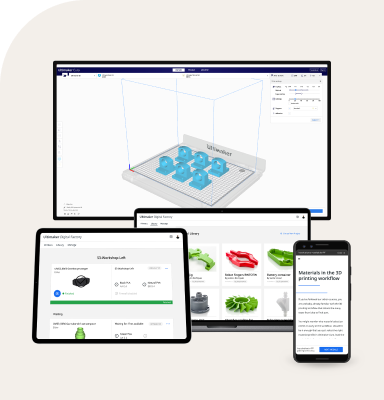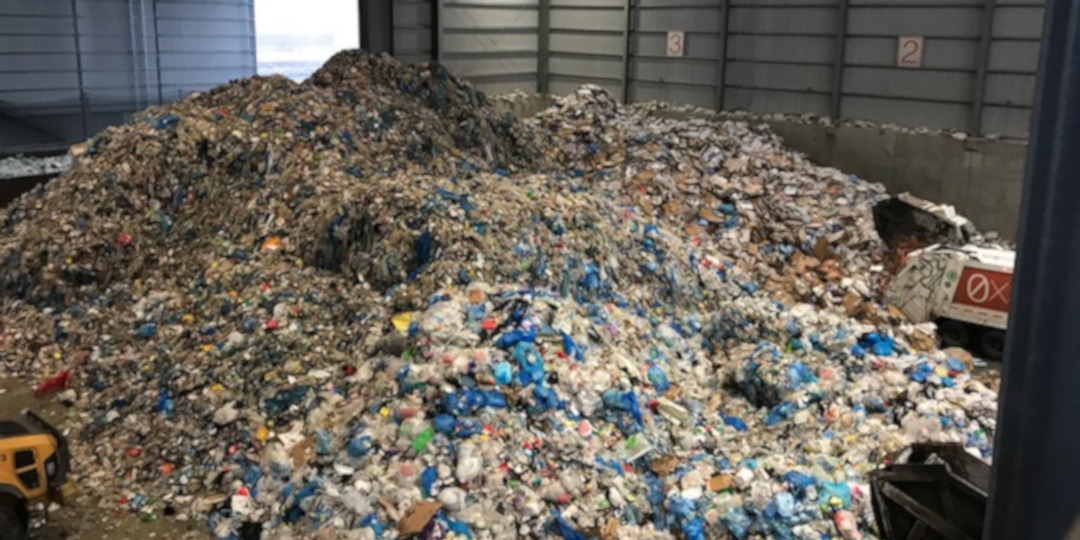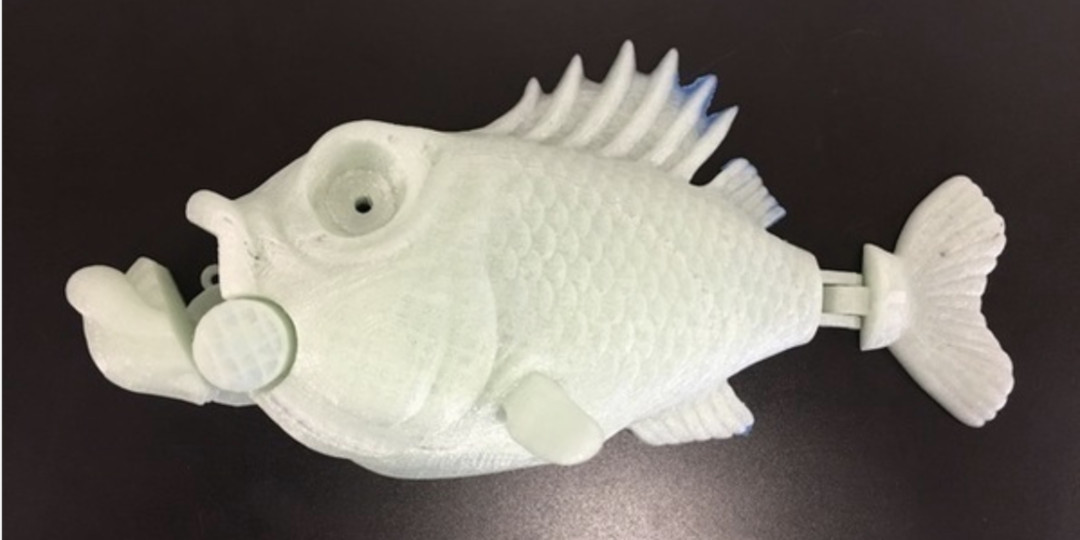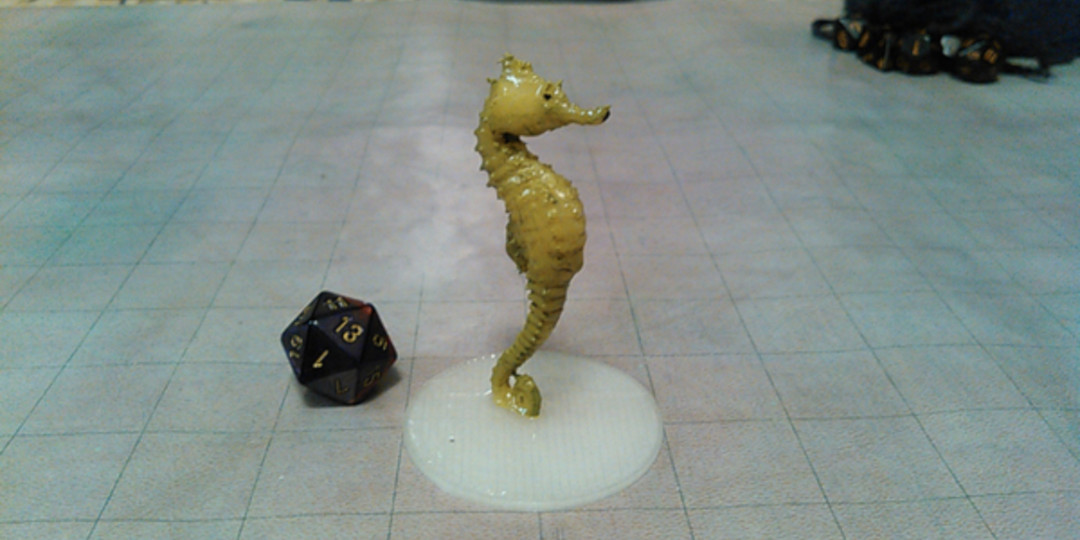Pioneer George Reynolds of Ashwaubenon High School contacted me about working on a collaborative community project that had students design and 3D print real or imagined fish, sea creatures, plants, and coral. He envisioned the printed pieces displayed in a community-generated aquarium that would travel to exhibits and different schools. An important aspect of this project was that it would be open to all students at all levels and abilities.
George, who works with art and tech, shared another idea about a device that lived in a public space, ground-up plastic bottles, and extruded them into filament. When enough filament was available, the device would create an item and a robotic arm would deliver it to the person lucky enough to be there at that moment. He also imagined a version that could accept money and donate it to an environmental advocacy organization.
While George was coming up with his project proposals, I was thinking about materials and 3D printing. I visited 3DBrooklyn to talk about their experience making filament out of recycled potato chip bags and to pick up some Refil recycled PET filament. I devoured the books Cradle to Cradle: Rethinking the Way We Make Things and The Upcycle by William McDonough and Michael Braungart. I reviewed the products that I buy and I started to replace some with those certified by the Cradle to Cradle Products Innovation Institute.
I also looked at companies that were taking advantage of “intentional” additive manufacturing versus “speculative” manufacturing in order to save time and money, and to reduce waste — companies like Farmshelf, Sylatech, Snow Business, 10xBeta, ABB Robotics, and even the Etsy stores with their customizable, made on-demand products.
From George's starting points, coupled with my exploration into materials and our exchange of ideas, came The Ocean Plastic Community Project, which combines art, technology, research, and an understanding plastic.
Before you can use design to solve a problem, you have to understand the problem.
This Ultimaker Community project starts January 2018, and culminates at Construct3D 2018 on October 5-8, in Atlanta, Georgia, with an exhibition of a collaborative student-created imaginary ecosystem.
We are inviting all students, at all levels, and of all abilities, to research plastic, recycling, and 3D printing, and then to design and 3D print real or imagined sea life, fish, marine plants, coral reefs, or anything that will draw attention to the beauty of our oceans, how we are treating them, and how we can make them healthier. All printed parts to be included in the public display must be sent to Ultimaker's NY office by September 2, 2018 (contact [email protected] for details). We also ask that all models be uploaded to Youmagine where you can explain in the description how your file is part of the collaboration. All designs must include the tag “#OceanPlastic.” If you want to share research projects, student films, etc., please include those links in your description.
Background
Plastic is cheap, lightweight, versatile, and the ideal material for many applications, from medical equipment to airplane parts, to fibers in clothing. Unfortunately, because some of our applications of plastic are based on single-use, a great deal of the plastic we use becomes waste. In fact, more than 8 million tons of it ends up in our oceans, and once there, it creates many problems: marine animals can be entangled in it, fish and birds can ingest it, and it interferes with the safety of sea transport, fisheries, tourism, and recreation. Plastic waste in our oceans also introduces toxins into the food chain, some of which may contribute to cancers, infertility, and immune, metabolic, cognitive and behavior disorders.
Exploring plastic, where it comes from, what it is, and how we use it, can help us be more thoughtful about what we make and how we make it. Reduce, Recycle, Reuse, yes, but also design better from the start.
How does 3D printing fit in? There is no question that 3D printing allows industries to abandon the linear, hierarchical processes created by the industrial revolution and to manufacture parts with more agility. And the types of materials used, such as thermoplastics, are perfect candidates for reuse after reuse.
Additive manufacturing encourages collaboration and allows designers and engineers to be more responsive to end-user needs, and to reduce production costs by being able to locally create complex geometries. By taking full advantage of 3D printing, we should be able to use less material, create complex and customizable objects where and when we need them, and open up design and innovation to more people. While your students may or may not be involved in manufacturing end-use parts, creating jigs or fixtures, producing prosthetics, or designing airplane or automotive parts, by providing them with access to 3D printing in schools and exposing them to the possibilities afforded by the technology, you can help prepare them for the future.
One of the most powerful and widely used applications of 3D printing in schools is rapid prototyping, which involves students in an iterative design process. While students have a chance to build resiliency and develop their critical thinking and communication skills, you might wonder about what to do with all those prototypes and failed prints. If this use of plastic gives you pause, check out filabot's recycling program or print with PETG or CPE, which according to SIMS, my local municipal recycling facility, can be identified with Near-infrared spectroscopy (NIR) technology at plants and be sorted and recycled with the least amount of effort. Or follow Pioneer Erin Riley, a maker, educator, and artist's lead and transform your PLA scraps into art.






















